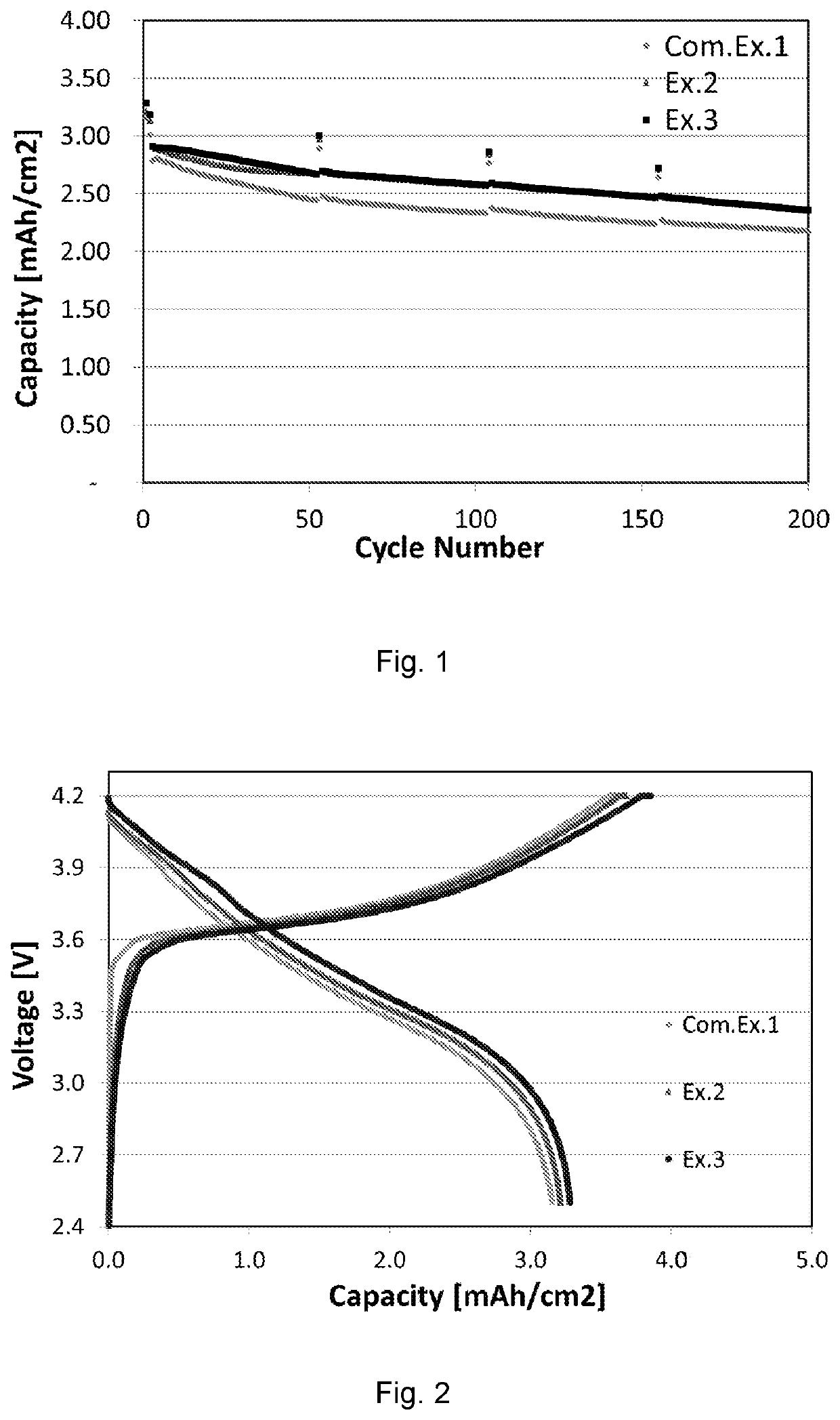Lithium Ion Battery and Prelithiation Method of Anode
- Summary
- Abstract
- Description
- Claims
- Application Information
AI Technical Summary
Benefits of technology
Problems solved by technology
Method used
Image
Examples
example 1
on of a Cell
Preparation of a Cathode
[0066]At room temperature, 965 gNCM-111, 15 g Super P and 20 g PVDF were added into 300 g NMP in a 1 L round bottom flask equipped with a stirrer. After stirring for 3 h, the resultant uniformly-dispersed slurry was coated onto an aluminum foil, then dried at 80° C. for 6 h. The coated Al foil was cut into several Φ12 mm cathodes.
Preparation of an Anode
[0067]At room temperature, 40 g Si powders, 40 g graphite powders, 10 g LiPAA, 2 g Super P and 2 g KS6L were added into 100 g deionized water in a 500 mL round bottom flask equipped with a stirrer. After stirring for 3 h, the resultant uniformly-dispersed slurry was coated onto a copper foil, then dried at 60° C. for 6 h. The coated Cu foil was cut into several Φ12 mm anodes.
Preparation of a Cell
[0068]Coin cells (CR2016) were assembled in an Argon-filled glovebox (MB-10 compact, MBraun) by using the cathodes and anodes obtained above. 1M LiPF6 in FEC / EC / EMC (30:35:35 by volume) was used as an electr...
example 2 (
Ex. 2)
[0070]A coin cell obtained in Example 1 was placed into a temperature chamber (VT 3050, available from Voetsch). The temperature was raised to 45° C. and kept for 5 hours. Then the cell was charged at 45° C. to 4.2 V (vs Li / Li+) at a current of 0.1 C for the 1st charge cycle. Subsequently, the cell was taken out of the temperature chamber and cooled down to room temperature (25° C.). Then the cell was discharged at 25° C. to 2.5 Vat a current of 0.1 C for the 1st discharge cycle. The aforementioned charge / discharge cycles was repeated in the 2nd and 3rd cycles. During the 4th to 200th cycles, the cell was charged / discharged at 25° C. within a normal voltage range from 2.5 to 4.2V at a current of 0.5 C. The mass loading of NCM in each cathode of the cells is about 10 mg / cm2. The specific capacities were calculated on the basis of the weight of NCM.
example 3 (
Ex. 3)
[0071]A coin cell was charged / discharged in the way as described above for Example 1, except that before charging, the temperature was raised to 65° C. and kept for 5 hours. Then the cell was charged at 65° C. to 4.2 V (vs Li / Li+) at a current of 0.1 C during the 1st to 3rd charge cycles.
PUM
 Login to view more
Login to view more Abstract
Description
Claims
Application Information
 Login to view more
Login to view more - R&D Engineer
- R&D Manager
- IP Professional
- Industry Leading Data Capabilities
- Powerful AI technology
- Patent DNA Extraction
Browse by: Latest US Patents, China's latest patents, Technical Efficacy Thesaurus, Application Domain, Technology Topic.
© 2024 PatSnap. All rights reserved.Legal|Privacy policy|Modern Slavery Act Transparency Statement|Sitemap

